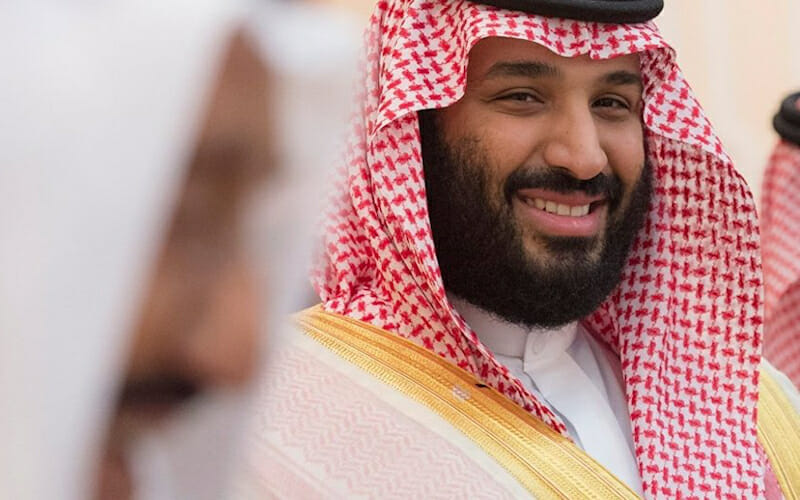
The Saudi Purge: The Parallel between Populism and Authoritarianism
In a series of surprising moves, authorities in Saudi Arabia detained hundreds of royal family members, government officials, and businessmen. The purge came on November 4th when King Salman passed a royal decree that placed his son and successor, Crown Prince Mohammad bin Salman (MBS), at the helm of a new anti-corruption committee. The new government body is tasked with the elimination of abuses of power. However, with corruption so widespread within the Saudi kingdom, it also has a political component.
Since the beginning of Mohammad bin Salman’s anti-corruption campaign, more than 200 people have been arrested and placed in luxury detention at the Ritz Carlton in Riyadh. The turn of events has been unprecedented in Saudi history and many are referring to November 4th as ‘the night of the long knives,’ which was a euphemism for the Nazi purge in 1934 that consolidated Hitler’s absolute hold on power in Germany. Among the detainees were senior princes, ministers, and financial figures. The highest-ranking arrested figure was Mutaib bin Abdullah, the son of former king Abdullah and former candidate for becoming the deputy Crown Prince. The prince was removed from his position as the head of the Saudi National Guard, which is a parallel military force to the regular armed forces within the Ministry of Defense. Prince Mutaib and Mohammad bin Salman had shared responsibilities for the armed forces. However, with Prince Mutaib out of the picture, MBS has extended his control to all of Saudi Arabia’s security departments.
Another figure targeted in the crackdown was Al-Waleed bin Talal, the CEO of Kingdom Holding Company and a major investor in companies such as Twitter, and Citigroup. Although Prince Al-Waleed has rarely expressed an interest in politics, his father Prince Talal (nicknamed the red prince), is a well-known liberal who has advocated for a National Saudi Constitution. The political stand of Prince Talal is in opposition to the policies of King Salman and Crown Prince bin Salman. Thus, by detaining Prince Al-Waleed, bin Salman hopes to keep the red prince in check. Other high-profile names that were detained include Prince Turki, the former Governor of Riyadh, Bakr bin Laden, the CEO of the construction conglomerate Saudi bin Laden Group, and Prince Fahad, the former Deputy Defense Minister. The list of detainees is too long to go over, but the point is that every person targeted posed either a direct or indirect threat to MBS. Thus, by using populist measures such as an anti-corruption crackdown, the Crown Prince has weakened the political opposition and strengthened his popular approval.
In this context, we are seeing a shift in the historical pillars of the Saudi government. These pillars included family consensus, relations with the religious establishment and the distribution of energy revenues. Ever since the Saudi tribe defeated the Hashemites and annexed the exterior parts of the West Arabian Peninsula in the 1920’s, the country has been ruled by the elders of the royal family. The founder of the Saudi State, Ibn Saud, had 45 sons, and 36 of these sons had children. With so many descendants, there was a lot of competition for the throne. As a result, the history of Saudi Arabia has been shaped by the royal rivalries to maintain some sense of unity in the dynasty. This patchwork created an informal system of checks and balances that prevented any single royal faction from dominating the kingdom. As a result, major economic and political decisions were determined by consensus among the family clans. This consensus-based power system ensured the unity of the Saudi dynasty and it functioned as a fundamental pillar of stability for the kingdom. The second pillar of stability was the dynasty’s relationship with the religious establishment. By embracing Wahhabi regulations, the House of Saud intensified its legitimacy. Despite these pillars of stability, getting everyone on board to ensure a unified state was an exceedingly difficult task. Thus, to keep everyone in line, the Saudi royal family distributed energy revenue among the royal clans and the Wahhabi establishment.
The ploy worked and although the internal rivalries still existed, the factions got along when there was enough wealth to go around. As such, energy revenues were the final pillar of the Saudi state as it suppressed internal conflict. However, these pillars of stability have run their course. The decline of oil prices has removed wealth from the equation and this has exposed the vulnerabilities of the Saudi government that had previously ensured its long-term domestic stability. The country must find additional revenue sources in order to generate sufficient income from the non-oil sector to guarantee its existence. The previous monarchs were aware of the necessary reforms that should have been enacted, but failed to do so due to the Saudi dynasty’s consensus-based power system.
King Salman, has now handed over the keys to the kingdom to Mohammad bin Salman. Since assuming the throne in 2015 after the passing of King Abdullah, King Salman has worked hard to strengthen the authority of his son. Today, MBS leads a long list of institutions and government positions. Many refer to him as ‘Mr. Everything.’ The purpose of showering bin Salman with titles is to remove essential government bodies from the other family clans and thereby, centralize the Saudi government. In fact, the Saudi kingdom has not seen such centralization of power since Ibn Saud. The difference however is that bin Salman has all the modern instruments of state at his disposal which Ibn Saud did not have. In addition, MBS is already the most powerful leader in Saudi history. By centralizing power, bin Salman hopes to reform the Saudi economy and build a sustainable non-oil sector through the Vision 2030.
This ambitious, yet enduring Vision 2030 plan will transform Saudi Arabia into an advanced industrial power. In order for this plan to become a reality, bin Salman must redesign Saudi Arabia from the ground up. First, MBS must sell a part of the state-owned oil company Saudi Aramco. Many Saudi princes see Saudi Aramco as their rightful piggy bank, and even selling as little as five percent is seen as a threat to their lifestyles. In addition to generating funds to implement economic reforms, bin Salman must also boost labor productivity by introducing drastic social changes. These social changes include the emancipation of women and allow them to participate in the workforce and public life. These changes are necessary for any modern economy, but they are also incompatible with the conservative Wahhabi teachings. As such, bin Salman’s efforts to modernize the kingdom are met with opposition from both the Wahhabi establishment and the Saudi princes.
Pushing the religious establishment and the Saudi princes up against a wall could backfire for MBS. However, one group who have applauded bin Salman’s purge are the Saudi youth, which make up around two-thirds of the total population. In this regard, the Crown Prince is seeking to use popular support as a replacement for the historical pillars of the Saudi state. The problem is that MBS is not an elected ruler. History shows that most authoritarian rulers who used popular methods end up being overthrown. As bin Salman rallies his support from the Saudi youth, he will have to implement more reforms to keep everyone satisfied. Eventually, MBS will have to come face-to-face with reforms he is incapable of enacting which could be his downfall. This is why populism and authoritarianism rarely ever work.
Mohammad bin Salman is also facing backlashes on the foreign policy front. Iran is doing incredibly well by driving out the remnants of DAESH militias along the Iraq-Syria border, and Hezbollah has strengthened its status in Lebanon. Moreover, Iranian-backed Houthi rebels are strong in Yemen, and Iran has also forged strong relations with Qatar. All of these developments have come at the expense of Riyadh’s miscalculations in the region. A day before the anti-corruption purge began, Houthi rebels in Yemen fired a ballistic missile near Riyadh. The Saudis intercepted the missile and believed it was produced by Iran, but so far, Tehran has denied the allegations, and there has been no evidence provided to support the claim. Many Middle East analysts speculated that Iranian authorities caught the news of the crackdown in Riyadh and sought to aggravate the situation by creating confusion within the Saudi capital. Another interesting development is the resignation of Lebanese Prime Minister Saad Hariri which also occurred on November 4th. Hariri is the highest ranking pro-Saudi politician in Lebanon.
His resignation was meant to break the coalition government in Lebanon and weaken the position of Hezbollah in Lebanese politics. Since Hezbollah is so entrenched in Lebanese politics and security, its power has been unrivaled, and the only faction that can exploit a shake-up in Beirut is neighboring Israel. How Bin Salman will deal with both the domestic and foreign situations is uncertain, but we do know that Saudi Arabia is on the decline, and no country can undergo domestic struggles and meet foreign challenges at the same time and the Crown Prince will have to prioritize. All in all, the historic pillars of the Saudi kingdom are no longer viable. Therefore, bin Salman must redesign the House of Saud and rebalance the power within it during this turbulent, transitional phase which will include more crackdowns, economic reforms, and social changes within Saudi society.

